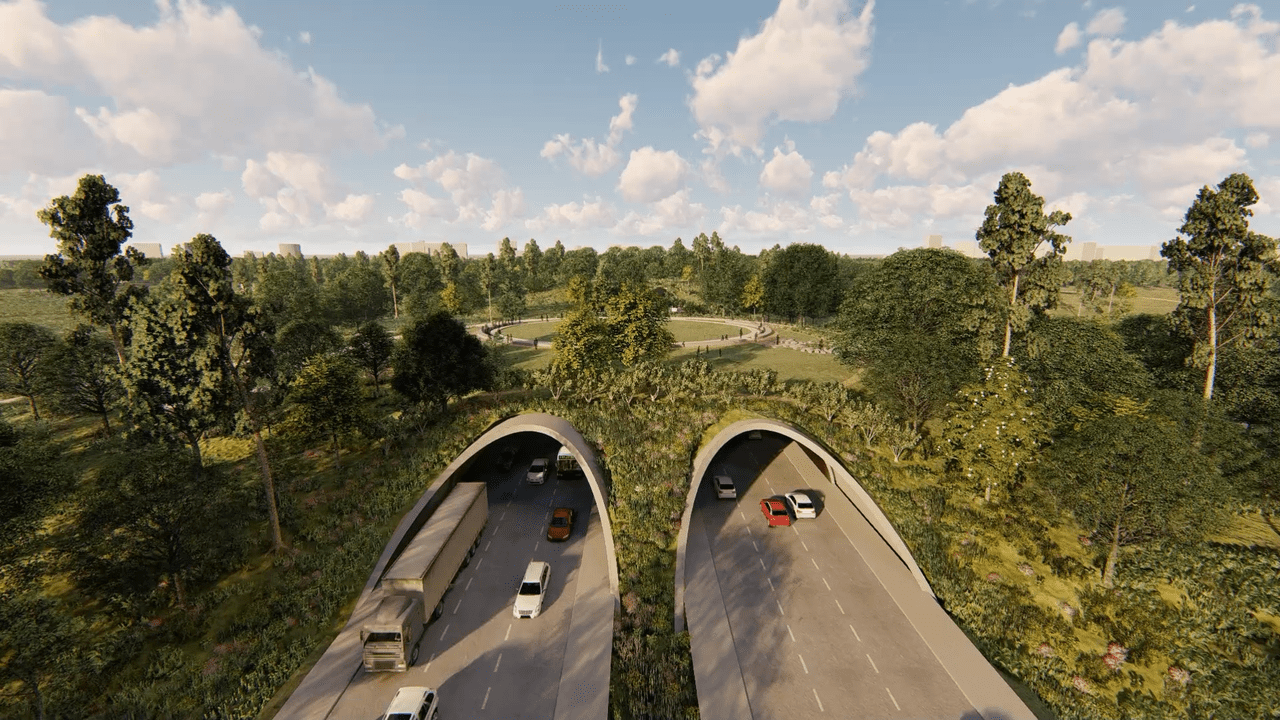Future Highways Must Look Like This
The plan not only creates a new locus and connector for people, but for wildlife too. No longer will wild animals have to attempt to skirt a six-lane highway to roam through their habitat. The newly opened Cyvia and Melvyn Wolff Prairie is also part of an initiative to create landscapes that can tolerate extreme weather like drought, hurricanes, and flooding, which, as the effects of climate change are felt, increasingly plague the region.
Woltz and his team conducted thorough research to understand the environment; how it has been changed and manipulated in the millennium since the land was settled by indigenous peoples, European colonists, private owners, and urban planners; and how it can be best reshaped, replanted, and reimagined to address this history as well as current and future challenges. “Our solution is this sort of audacious 21st-century hybrid of reaching back toward a thousand-year-old ecosystems—to savanna, dry prairie, and wet prairie. Reaching back into deep history, ecological history, to find the most resilient solutions. So it becomes a high-performance landscape that is also an authentic and even ancient native Texas ecosystem,” Woltz says. “To my mind, it’s the triumph of green over gray.”
The reveal of this land bridge and its accompanying landscapes is perhaps the most visible of the park’s recent changes. But these openings cap off just the first decade of the master plan that Woltz and his team have developed with the city. “There’s so much more to come—miles of riding trails, running trails, boardwalks, and an actual memorial to the soldiers of World War I. These are all for future phases,” Woltz says.







